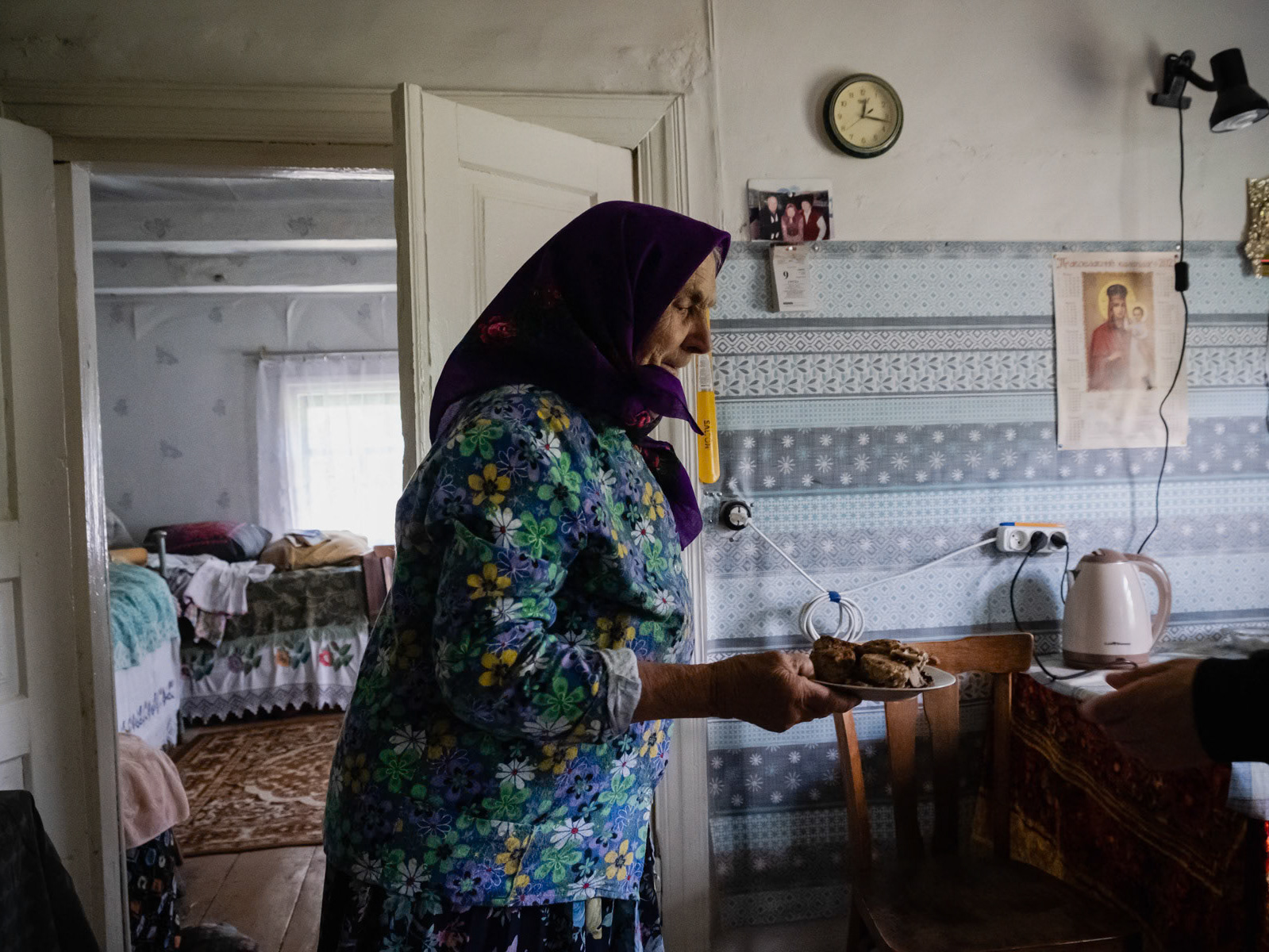Four years after my last visit, the region has dramatically changed, with a noticeable increase in economic activity and nearly a complete cleanup of abandoned areas, except for a very few. A large number of renewable energy farms have been constructed on condemned land around Ground Zero. Additionally, scientific research centers have been established in Namie, and facilities to host the thousands of workers employed in decommissioning the Fukushima nuclear power plant have been built.
Fishing activities along the coast have had a much harder time recovering from the aftermath of the disaster, particularly due to the perception that the fish may be contaminated. The decision by the Japanese authorities, in coordination with the International Atomic Energy Agency (IAEA), to release treated cooling water into the ocean near the nuclear power plant has further eroded consumer confidence and may have condemned the already devastated fishing industry along Japan's eastern coast. The first release of cooling water took place in August 2023, followed by a second release in October 2023. China and other countries have decided to boycott all fish products from Japan until further notice, substantially affecting this vital sector in Japan.
Beaches along the Pacific coast near the Fukushima nuclear power plant, which is still in the stabilization and cooling phase, are part of the ongoing process toward eventual decommissioning. Twelve years after the disaster, there is no longer enough space to store the water used for cooling the damaged reactors, and since August 2023, it has been released into the ocean after decontamination.

Four years after my last visit, the region has dramatically changed with a noticable increased economic activity and an nearly complete clean up of abandonned places except very few ones. A large number of renewal energy farms have been constructed on condemned land around ground zero. Also scientific research centers have been established in Namie and of course facilities to host the thousand of workers employed in decomissioning the Fukushima nuclear Power plant. Fishing activities along the coast have had a much harder time to recover from the aftermath of the disaster and in particular the perception that the fish may be contaminated. The decision by the Japanese authorities in coordination with the International Atomic Energy Agency (IAEA) to release treated cooling water in the ocean at the level of the nuclear power plant, has further reduced the confidence of consumers and maybe condemned the already devastated fishing industry along Japanese east coast. The first release of cooling water has taken place in August 2023 with a second one in October 2023. China and other countries have decided to boycot all fish products from Japan until further notice, substantially affecting a vital sector in Japan. Beach along the Pacific coast beside the Fukushima nuclear power plant that is still in the phase of stabilisation and cooling in order to be eventually dismantled. Twelve years after the disaster there is not enough space anymore to store water that is being used for the cooling of the damaged reactor and is since August 2023 being released after decontamination directly in the ocean. Tomioka, Fukushima, Japan, October 2023
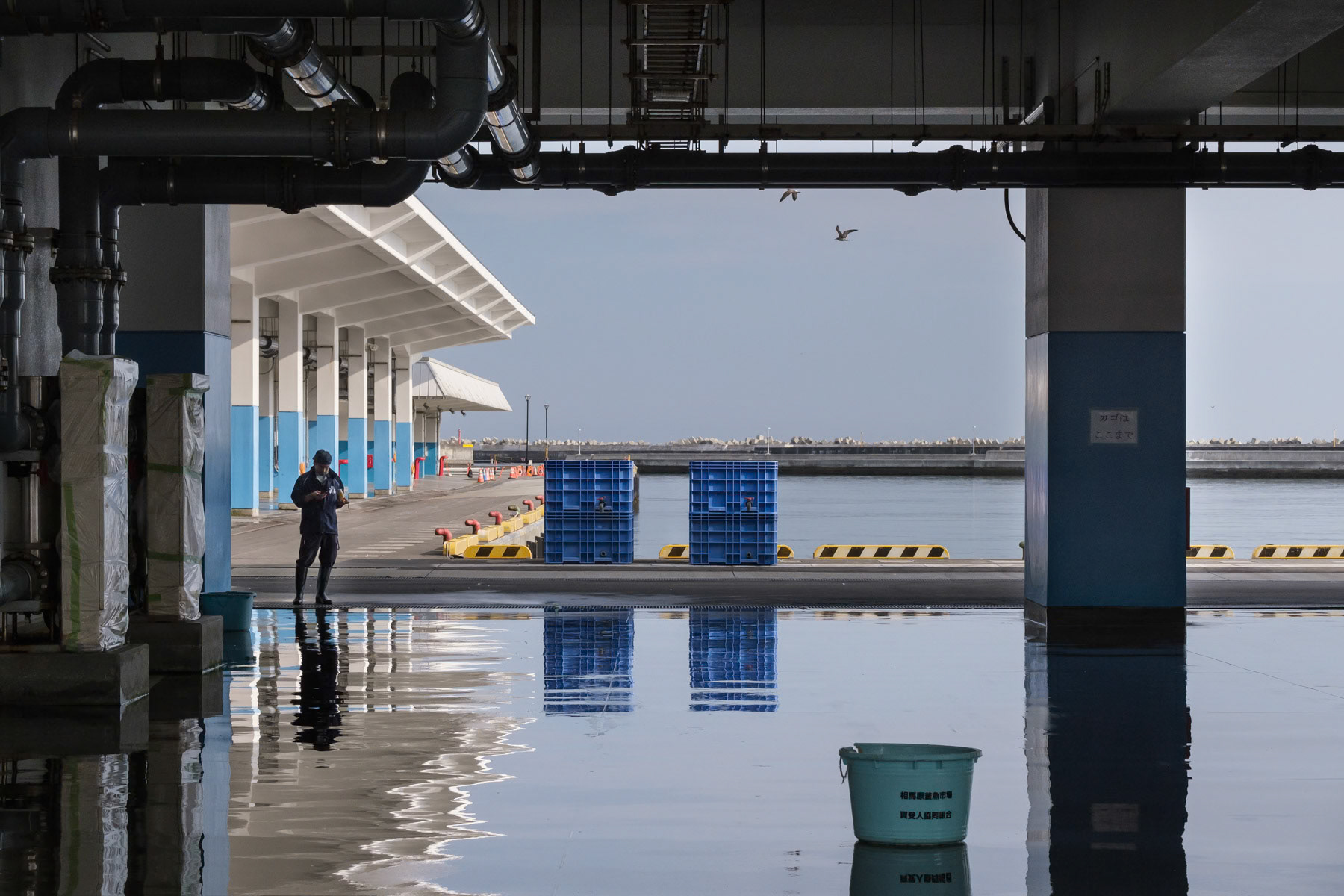
Soma fishing port 40 Km north of the Fukushima nuclear power plant. Since the nuclear disaster of 2011 it has been extremely difficult to restart a sustainable fishing industry along the Pacific coast. Since 2023 treated cooling water is being released in the ocean after numerous tests and studies claiming it is not harmful to marine life, environment and people's health. However, confidence is very low and regional boycott have devastated an already affected fishing industry so important for the region. Soma fishing port, Fukushima, Japan, October 2023

Fishermen preparing their nets and boat at the Soma fishing port about 40 Km north of the Fukushima nuclear power plant where treated cooling water is being released in the ocean after the green light of the international agency for nuclear energy. Soma, Fukushima, Japan, October 2023

Surroundings of the Fukushima nuclear power plant, Naime, Fukushima, October 2023

Abandoned town of Futaba beside the Fukushima nuclear power plant. Futaba, Fukushima, Japan, October 2023
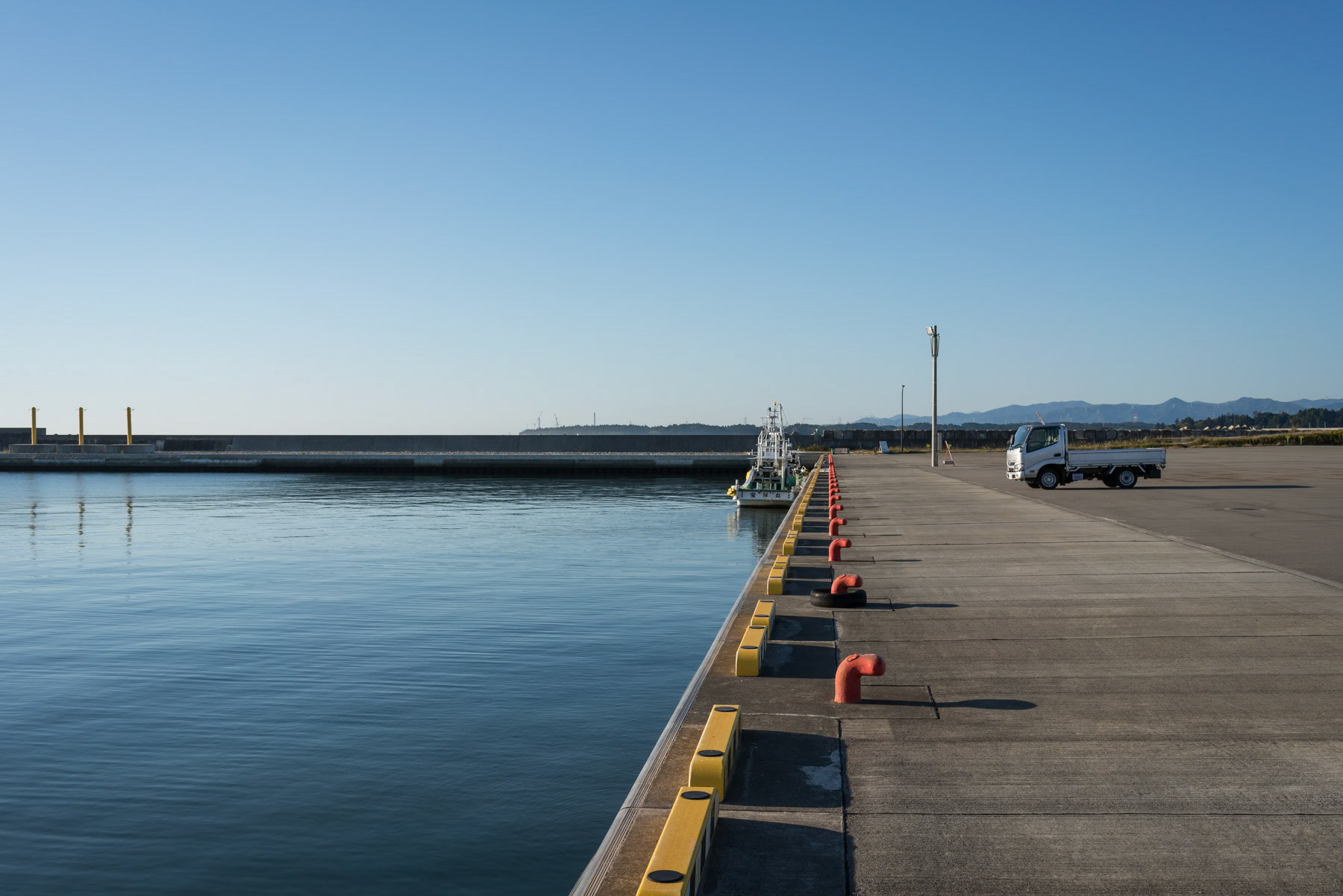
Tomioka fishing port beside the Fukushima nuclear power plant. Since the nuclear disaster of 2011 it has been extremely difficult to restart a sustainable fishing industry along the Pacific coast. Since 2023 treated cooling water is being released in the ocean after numerous tests and studies claiming it is not harmful to marine life, environment and people's health. However, confidence is very low and regional boycott have devastated a just recovering fishing industry so important for the region. Tomioka fishing port, Fukushima, Japan, October 2023

Fisherman checking his nets after returning to a fishing port about 40 Km north of the Fukushima nuclear power plant where treated cooling water is being released in the ocean after the green light of the international agency for nuclear energy. Soma, Fukushima, Japan, October 2023

Abandoned town of Futaba beside the Fukushima nuclear power plant. Futaba, Fukushima, Japan, October 2023

Fishing boat ready to leave at night from Onagawa fishing port some 100 Km north of Fukushima where treated cooling water is being released in the ocean after numerous tests and studies claiming it is not harmful to marine life, environment and people's health. However, confidence is very low and regional boycott have devastated an already affected fishing industry so important for the region. Oganawa, Japan, October 2023

Abandoned shops in the town of Futaba beside the Fukushima nuclear power plant. The place has been off limit to live there since the nuclear disaster in 2011. Futaba, Fukushima, Japan, October 2023

Concrete wave breakers and fortifications to fight against tsunamies. Tomioka fishing port, Fukushima, Japan, October 2023

Soma fishing port 40 Km north of the Fukushima nuclear power plant. Since the nuclear disaster of 2011 it has been extremely difficult to restart a sustainable fishing industry along the Pacific coast. Since 2023 treated cooling water is being released in the ocean after numerous tests and studies claiming it is not harmful to marine life, environment and people's health. However, confidence is very low and regional boycott have devastated an already hardly recovering fishing industry so important for the region. Soma fishing port, Fukushima, October 2023

Beach along the Pacific coast beside the Fukushima nuclear power plant that is still in the phase of stabilisation and cooling in order to be eventually dismantled. Twelve years after the disaster there is not enough space anymore to store water that is being used for the cooling of the damaged reactor and is since August 2023 being released after decontamination directly in the ocean. Tomioka, Fukushima, Japan, October 2023
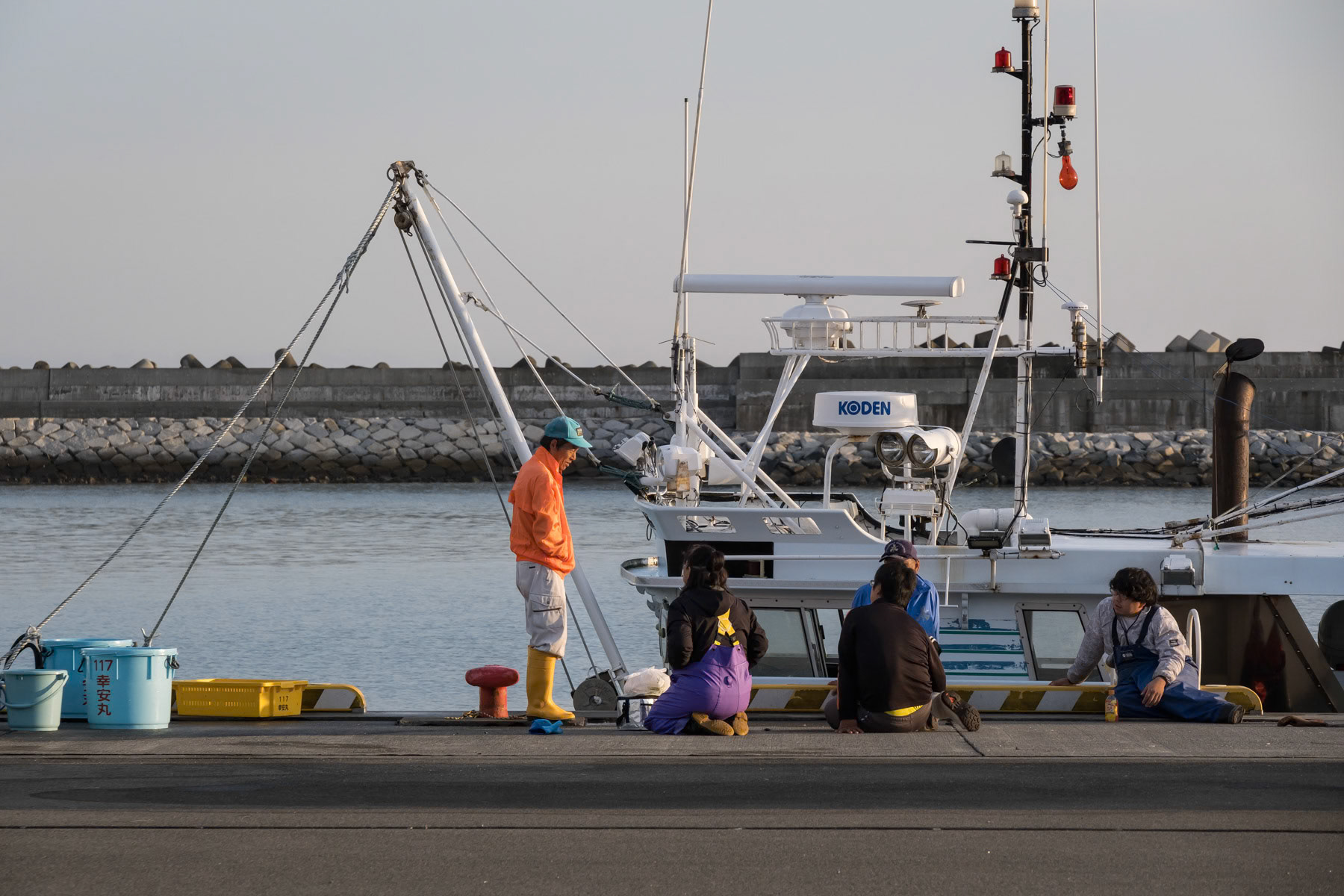
Fishermen beside their boat at the Soma fishing port about 40 Km north of the Fukushima nuclear power plant where treated cooling water is being released in the ocean after the green light of the international agency for nuclear energy. Soma, Fukushima, Japan, October 2023
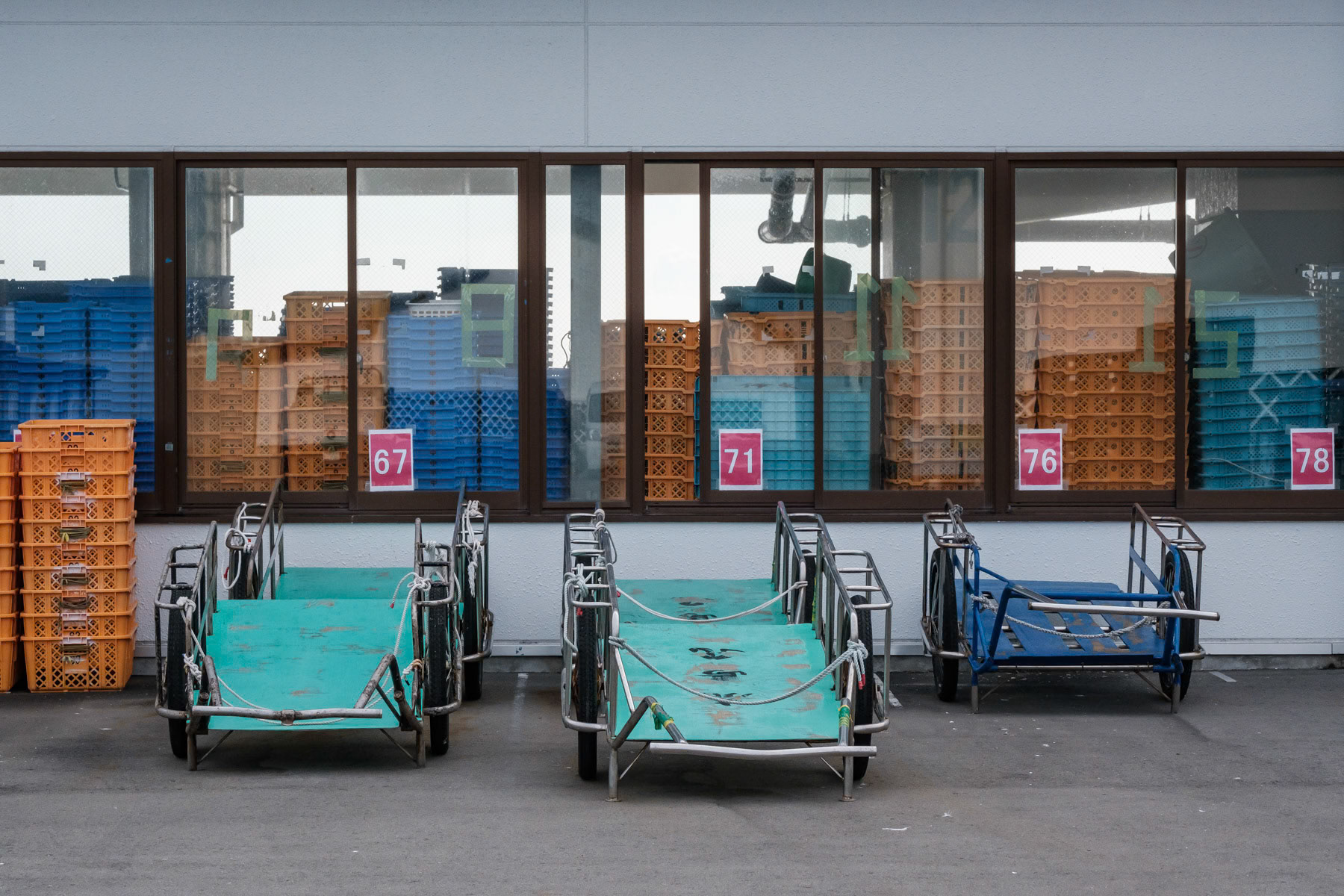
Soma fishing port 40 Km north of the Fukushima nuclear power plant. Since the nuclear disaster of 2011 it has been extremely difficult to restart a sustainable fishing industry along the Pacific coast. Since 2023 treated cooling water is being released in the ocean after numerous tests and studies claiming it is not harmful to marine life, environment and people's health. However, confidence is very low and regional boycott have devastated an already affected fishing industry so important for the region. Soma fishing port, Fukushima, October 2023
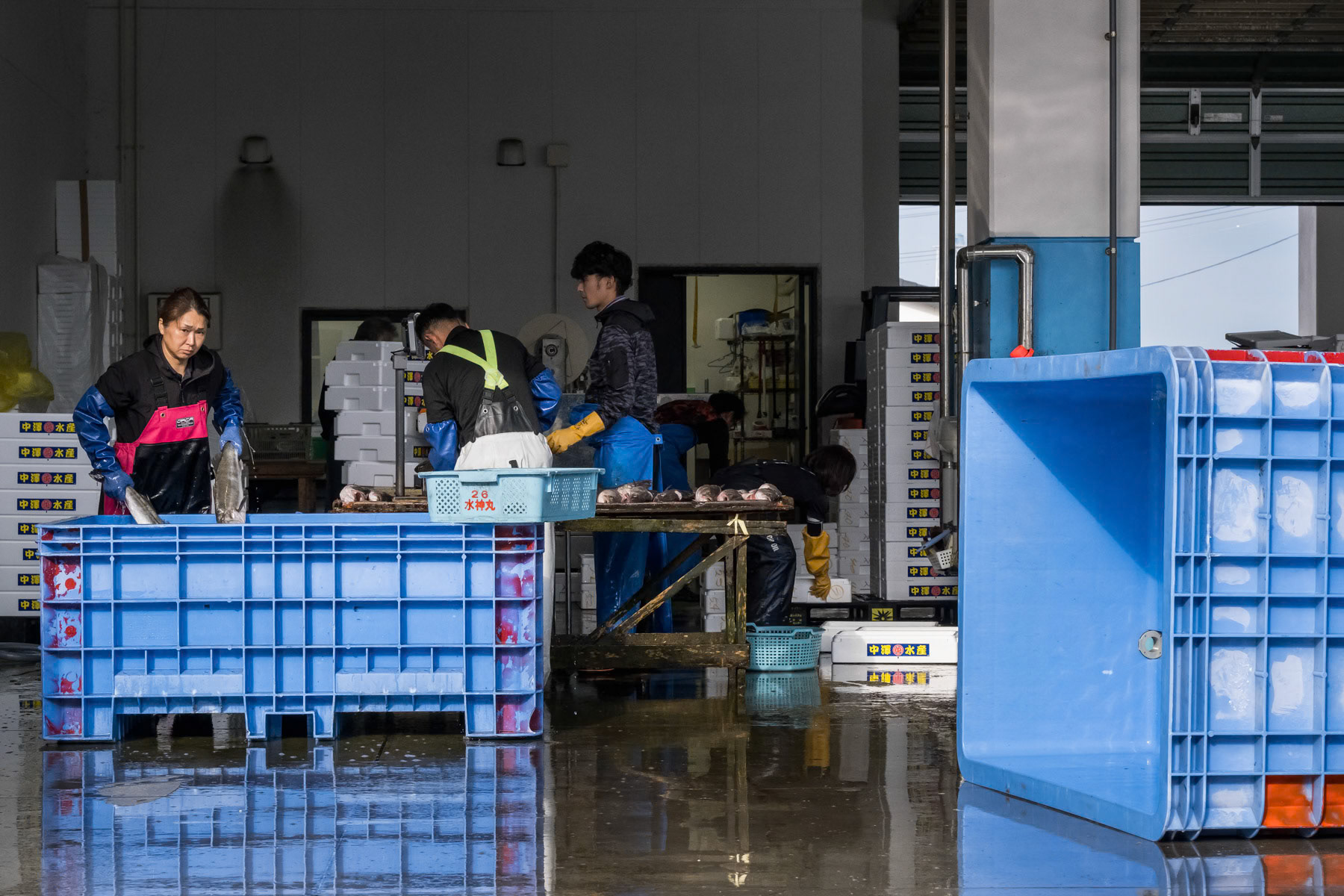
Fishermen preparing the catch of the day for further shipment. Soma fishing port 40 Km north of Fukushima nuclear power plant. Soma, Fukushima, Japan, October 2023

Futaba town transit, 5 Km from the Fukushima nuclear power plant. Fukushima, Japan, October 2023
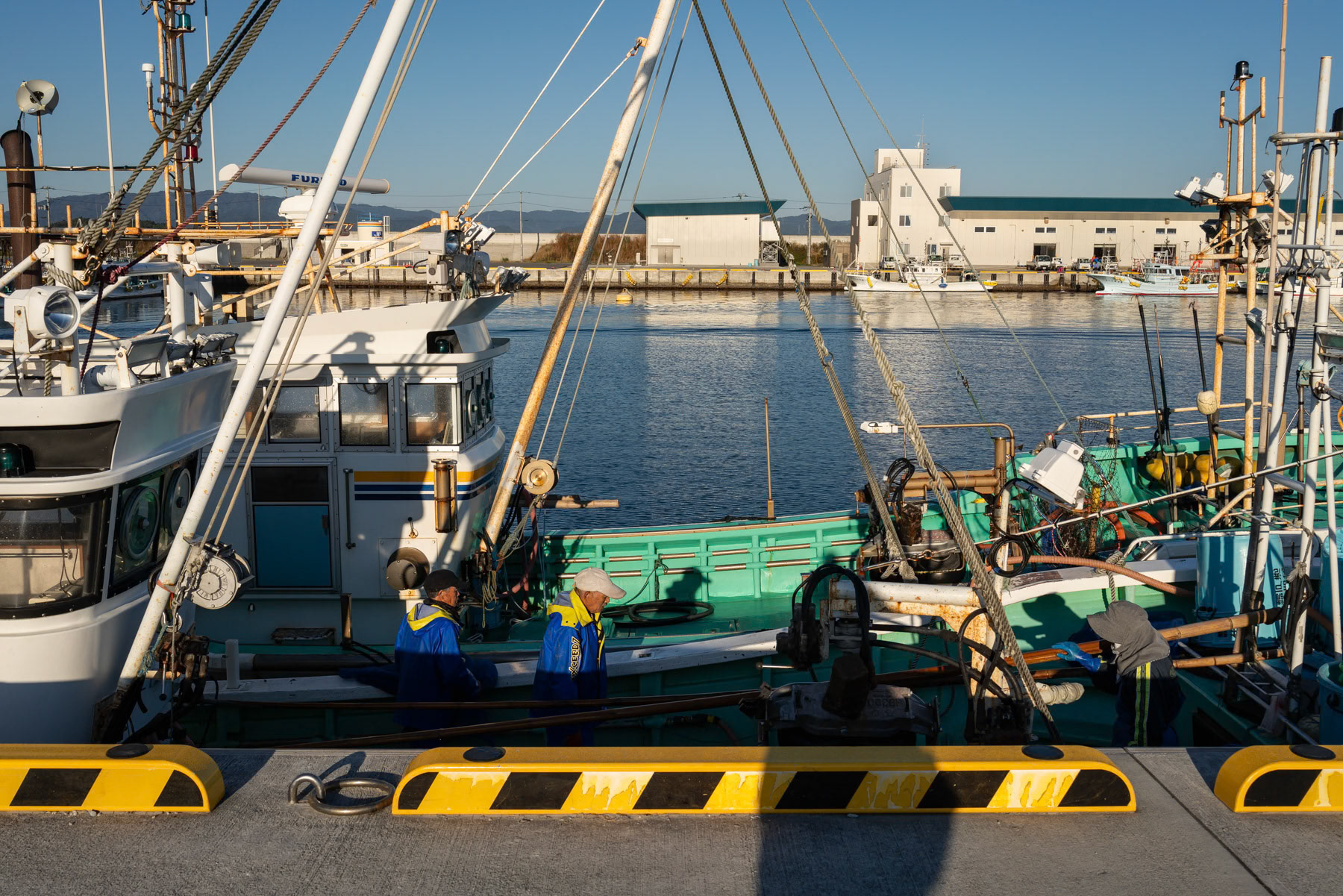
Fishermen in the fishing port of Tomioka near the Fukushima Daichi nuclear power plant. Tomioka, Fukushima, Japan, October 2023

Concrete wave breakers and fortifications to fight against tsunamies. Tomioka fishing port, Fukushima, Japan, October 2023










